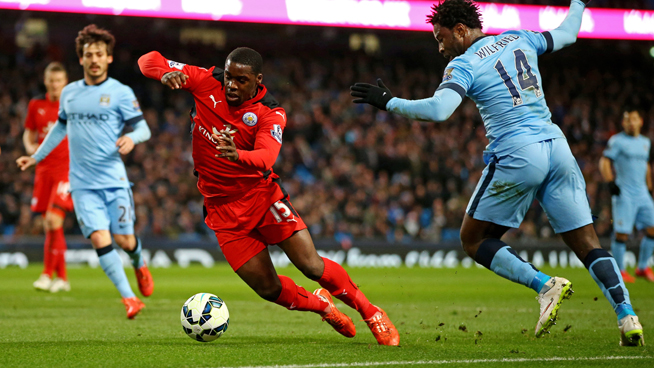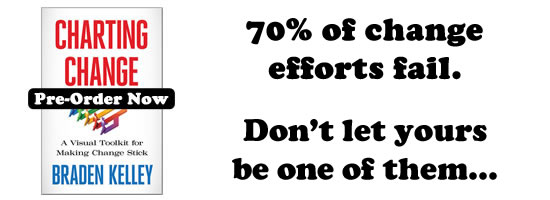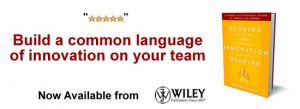Integrating Agility with Stability to Innovate

When I moved on from being a high powered corporate retail executive almost thirty years ago, I took the entrepreneurial leap and initiated a design management consultancy to serve the Australian fashion and lifestyle industries. Interestingly, in those days, the focus was on stabilising innovation entrepreneurial businesses through conventional business management practices. This included tools like SWOT and competitive analyses, target marketing strategies, product portfolio management and of course, sound business planning incorporating the 3-5 year strategic plan.
With the shift towards game changing start-ups as the emerging organizational model, tools like these are no longer as relevant as they were in the past. This doesn’t mean that efficient management practices no longer matter, the need for organisations to cultivate speed and agility have re-framed the context of what it means, to be an efficient organization, whilst being “both†dynamic “and†stable.
This was reinforced recently, in McKinsey Quarterly; “Companies can become more agile by designing their organizations both to drive speed and create stability†and that “truly agile organizations, paradoxically learn to be both stable (resilient, reliable, and efficient) and dynamic (fast, nimble, and adaptive)â€
How does this impact innovation consulting?
At ImagineNationâ„¢ our clients come from both the conventional manufacturing and service sectors, as well as from the growing start-up sector, which means that we adapt our methodologies to meet their needs, see, respond to and solve their problems and co-create innovative solutions that add value to people and customers.
This suggests that the focus now is on towards designing organizations that can survive,flow and flourish with disruption and change. This requires us to think very differently about how we, as consultants approach, apply and anchor the paradoxical notions of agility and stability with our clients.
It’s about knowing “both†how to adapt the dynamism that start-ups excel at, to cultivate speed, nimbleness and adaptiveness in larger, more traditional organizations, who want to cultivate innovation agility.
“And†how to adapt the stability that larger organizations excel at, to enhance start-up resilience, reliability and efficiency and especially to consolidate their expediential growth, whilst sustaining their creative and unique cultures.
This is further evidenced by the recent ING Business Transformation, co- led by Bart Schlatmann, former COO, of ING Netherlands, where he stated: “Agility is about flexibility and the ability of an organization to rapidly adapt and steer itself in a new direction. It’s about minimizing handovers and bureaucracy, and empowering people. The aim is to build stronger, more rounded professionals out of all our peopleâ€.Â
Strategic, systemic and end to end
At ImagineNationâ„¢ to enable our clients to manage this paradox, we take a strategic, systemic and end to end approach to discovering, designing and delivering our clients change or innovation strategy. This encapsulates what Bart Schlatmann, former COO, of ING Netherlands also said to Mc Kinsey:  “Being agile is not just about changing the IT department or any other function on its own. The key has been adhering to the “end-to-end principle†and working in multidisciplinary teams, or squads, that comprise a mix of marketing specialists, product and commercial specialists, user-experience designers, data analysts, and IT engineers—all focused on solving the client’s needs and united by a common definition of success. This model was inspired by what we saw at various technology companies, which we then adapted to our own businessâ€.
Building a business evolution plan – ImagineNationâ„¢ case study overview
A new client, a very successful digital start-up, experiencing expediential growth, recently challenged us to outline how we could partner with them, to achieve stability within their specific organizational context. They requested that we design an approach and method to co-create and implement an aligned solution to master this paradox. Â Specifically to evolve, stabilise and scale their business to achieve the next major step change and execute their business strategies successfully for the coming year within a simple business evolution plan.
This became a challenging experiment; to invent an organizational design, within a “loose/tight†structure, to enable them to “both†achieve their high business performance business outcomes, “and†at the same time, maximize their core strengths of speed, flexibility and empowerment, human centred positioning and enviable start-up culture.
- Co-creating the playing field of the future
Our generative challenge focussed on how we could possibly and ultimately co-create, with our client, the parameters for operating in “their playing field of the future†what McKinsey describe as defining “a relatively unchanging set of core elements—a fixed backboneâ€.
- Step One Readiness and Receptivity
This involved our initial design incorporating three key concepts: a human centred, customer and people centric focus, ensuring alignment to the start-ups defined strategic pillars and core values whilst adapting lean start-up methodologies and strategies to anchor their scale and growth.
We focussed on building top team alignment as well as selecting, empowering and coaching an internal team of INNOVATION TRANSFORMERS to partner with our consulting team.
- Step Two Analyse and Diagnose
This involved empowering the INNOVATION TRANSFORMERS to engage with people to research the key business problems, operating patterns, possibilities and opportunities within a simple facilitative and coaching context.
- Step Three        Plan and Implement
This involved co-creating a hypothetical agile start-up business structure and identifying the key roles that could be constantly be verified, adapted and evolved as the business scaled and grew. To develop a culture of ownership/personal responsibility, empowerment and collaboration and a focus on improving their people and customer experience. To clarify what success could look like and what 90 day business goals could facilitate the first key steps achievement.
This was supported by the development of the agreed desired behavioural norms that brought the values to life and clarified expectations as to “how to do things around here.â€
Our focus as to then identify, agree and embed high performance mindsets behind the behavioural norms which would support the agile start-up culture, vision and values to establish the playing field of the future.
It was also important to develop aligned communications channels and agreed core decision making processes and role clarity.
- Step Four Educate and Coach
Our next task was to create a common understanding of the business evolution plan and build overall innovation agility by developing a customised blended learning solution that included The Start-Up Gameâ„¢ and The Coach for Innovatorsâ„¢. This involved creating a playful, engaging and experiential learning environment that encouraged creativity and built collaboration, whilst teaching people creative problem solving and teaming skills.
The Start-Up Gameâ„¢ is a two day business simulation that brings lean start-up methodologies to enable players to debate and generate creative solutions to the key business problems that the INNOVATION TRANSFORMERS identified. It was customised to bring the agreed behavioural norms to life, within a safe learning environment, so that players had permission to experiment with them, learn by playing, doing and failing, and to embody them at the head, heart and guts levels.
This facilitated the development of the desired mindset and behaviour shifts and generative skills development to apply in daily actions, activities and embed habits.
- Step Five Align People, Process & Technologies
To ensure that our process delivered what it promised, and involved deep implementation processes including setting up internal challenge teams led by the INNOVATION TRANSFORMERS: with clearly assigned roles & responsibilities, project plans and monitoring & reviewing processes.
It involved a series of facilitated sales pitches by the challenge teams with their innovative solutions presentations for further product, service and technology developments.
Finally we agreed and planned the next set of 90 day actions plans, aligned reward and recognition processes, developed feedback loops and processes and processes for measuring and celebrating successes.
Making innovation part of everyone’s job, everyday
The playing fields of the future will be very different to what they are today, and organizations, no matter their size or nature, will master the future business game by maximizing opportunities available today, within the paradoxical nature of integrating agility with stability.
To take advantage of the Early Bird price for The Coach for Innovators Certified Program and get a US$200.00 discount by using the discount coupon- EARLYBIRD if you pay by Friday, 19th May. Register now https://www.imaginenation.com.au/product/certified_program/
Wait! Before you go…
Choose how you want the latest innovation content delivered to you:
- Daily — RSS Feed — Email — Twitter — Facebook — Linkedin Today
- Weekly — Email Newsletter — Free Magazine — Linkedin Group
 Janet Sernack is an ICF ACC accredited executive coach, corporate trainer, group facilitator and culture and change consultant with over 25 years of experience with some of Australasia’s and Israel top 100 companies. She is the Founder of ImagineNation™ a generative and provocative innovation education company that provides innovation e-learning programs including The Coach for Innovators Certified Program™ experiential learning events including The Start-Up Game™ and culture transformation projects that enable people and corporations to develop a strategic and systemic innovation culture and internal capability.
Janet Sernack is an ICF ACC accredited executive coach, corporate trainer, group facilitator and culture and change consultant with over 25 years of experience with some of Australasia’s and Israel top 100 companies. She is the Founder of ImagineNation™ a generative and provocative innovation education company that provides innovation e-learning programs including The Coach for Innovators Certified Program™ experiential learning events including The Start-Up Game™ and culture transformation projects that enable people and corporations to develop a strategic and systemic innovation culture and internal capability.
NEVER MISS ANOTHER NEWSLETTER!
LATEST BLOGS
Will the iPhone Come to T-Mobile?
Lost in the noise this week was an announcement of a settlement in a legal dispute in which Sprint agreed…
Read MoreHow Charity could help spread Innovation
Every once in a while innovations come along that offer profitable opportunities for the inventors and business minds that turn…
Read More



